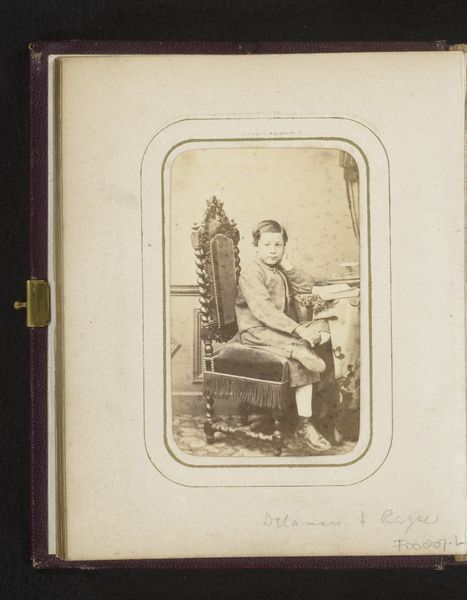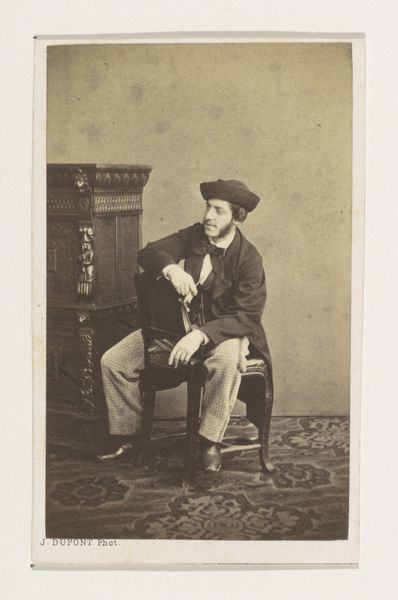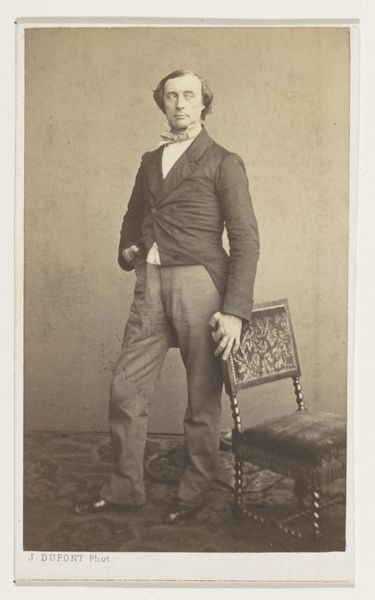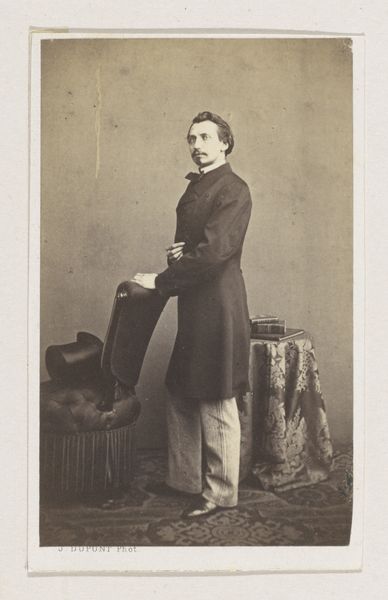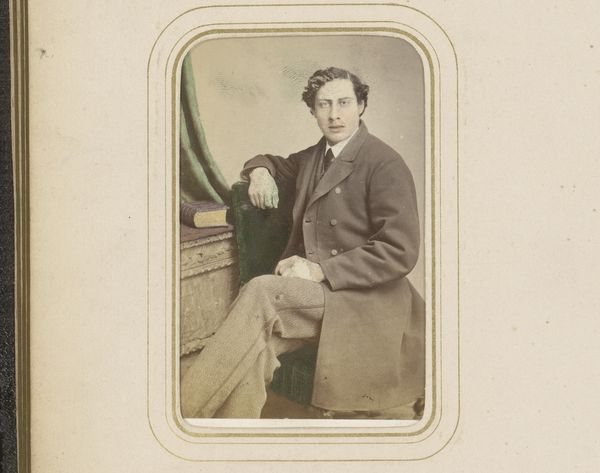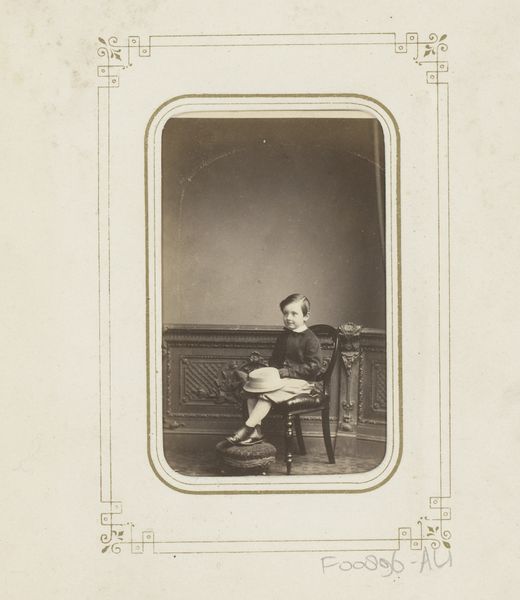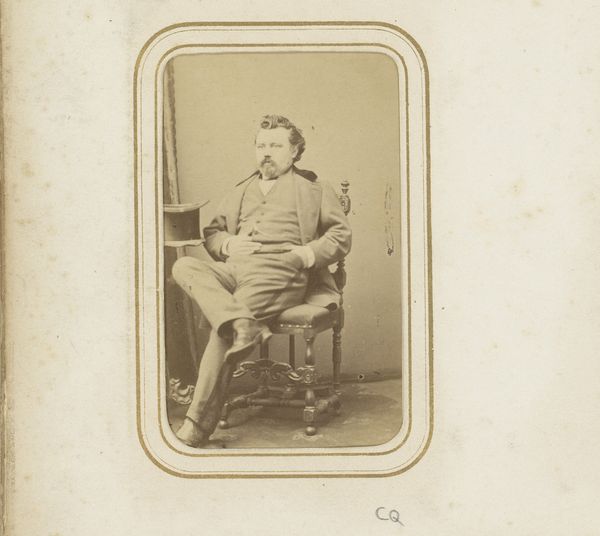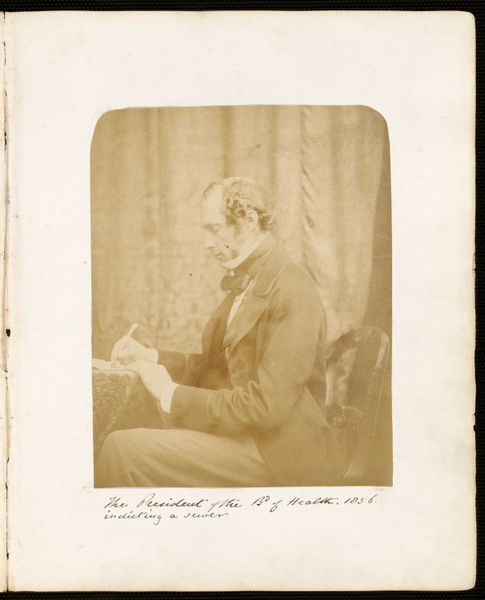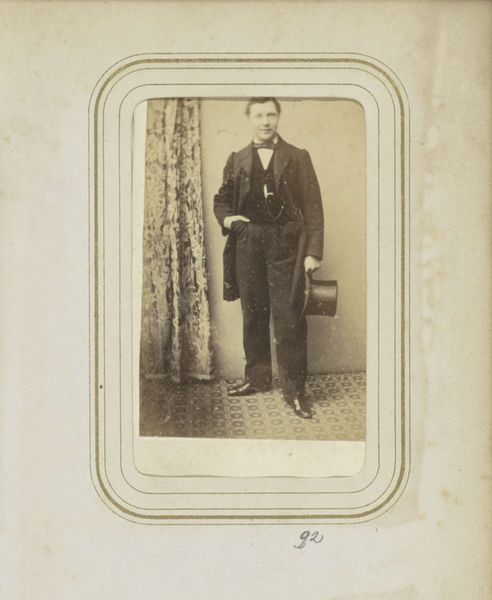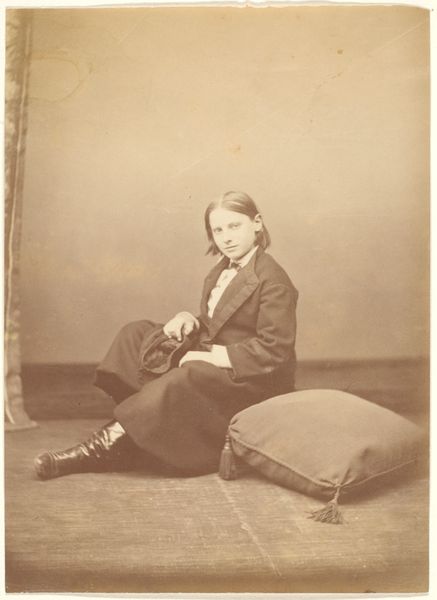
Portret van de architect Looymans, ten voeten uit, met een maquette van de door hem ontworpen Beurs van Antwerpen 1861
0:00
0:00
daguerreotype, photography
#
portrait
#
daguerreotype
#
photography
#
historical photography
#
history-painting
#
realism
Dimensions: height 102 mm, width 62 mm
Copyright: Rijks Museum: Open Domain
Editor: Here we have a photograph from 1861, "Portrait of the architect Looymans" by Joseph Dupont, showing Looymans in full figure with a model of his design for the Antwerp Stock Exchange. The first thing that strikes me is the emphasis on architecture and civic pride in a modernizing Antwerp. What's your read on it? Curator: Indeed. Think about the time: photography was relatively new, yet already deployed to cement the image of powerful individuals, especially those shaping urban landscapes. This portrait, a daguerreotype, presents Looymans not merely as an individual, but as a symbol of progress and burgeoning capitalism. What statement do you think that the inclusion of the model makes? Editor: I imagine that this model is supposed to speak of progress and innovation and shows Looymans to be a figure behind these ideals. Given this photograph was taken in 1861, what are some things to consider about Antwerp's historical standing at the time? Curator: The image participates in creating the "myth" of progress, characteristic of that moment. Dupont uses the relatively new medium of photography to visually express what the middle-class, merchants of Antwerp aspire to be: modern and connected with global capital. This image projects Antwerp’s self-image. It’s crucial to remember photography isn’t simply a reflection of reality but a construct. The staging, Looymans’ pose, all contribute to this narrative. This image helps cement Looymans' reputation. Does knowing that change your perception of the photograph at all? Editor: That definitely changes the way I see this portrait. Now, the photograph appears like a carefully crafted statement about Antwerp's identity rather than just a record of its architect and his work. Thanks for pointing that out. Curator: Precisely. And that awareness—of how images are produced and circulated—is vital when engaging with any work of art, historical or contemporary.
Comments
No comments
Be the first to comment and join the conversation on the ultimate creative platform.

